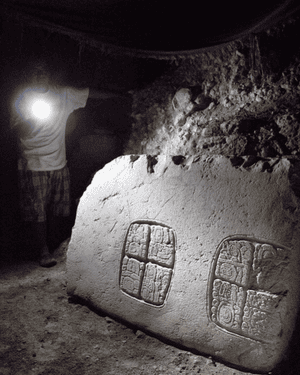
Click the above logo to return to the main site
TisILeclerc wrote:Vivien according to wiki is the naughty nautical lady of the lake who Borry sails across to in his jaunty saucy sailor suit to get megalithic tips and how to tie knots and things.
TisILeclerc wrote:May the sunbeam down on your endeavour
Among features pioneered by Sunbeam were overhead valve engines, brakes on all four wheels, power assisted brakes and twin overhead camshaft engines. Twin cam engines were standard on the 3 litre Super Sports models from 1924.
Sunbeam also held the world land speed record on several occasions as commemorated on British stamps issued in 1998. Malcolm Campbell's first "Bluebird" was a Sunbeam and in 1924 he achieved 146mph on an 18 litre 12 cyl Sunbeam developing 350hp. He had achieved the same speed a year earlier but the timing equipment had not been approved. In 1925 he was the first to reach 150mph on a similar car.
In 1926 Maj. Henry Segrave beat this on a new 4 litre 12 cyl Sunbeam when he reached 152 mph. The final triumph came in 1927 when Major Segrave, driving a twin engined 1000 hp Sunbeam, again broke the World's Record with a speed over 200mph for the first time.
TisILeclerc wrote:The Irish founded Rome as well as other places. They were the Phoenicians as well.
How does one achieve enlightenment? What is the meaning of life? Is there a God? What is alchemy? Why are we here? How was the universe created? What is the nature of good and evil? All of these questions and more are laid bare by Alasdair Forsythe, the founder of Forgotten Books, in his newly published works.
For more information visit AlasdairForsythe.com.
http://www.alasdairforsythe.com/
The tomb represents an extraordinary find, if only for its construction. At 4.5 meters by 2.4 meters, it is “one of the largest burial chambers ever discovered in Belize”, Awe said. It appears to differ dramatically from other grave sites of the era. Most Maya tombs were built “intrusively”, as additions to existing structures, but the new tomb was built simultaneously with the structure around it – a common practice among cultures such as the ancient Egyptians, but uncommon among the Mayas.
“In other words, it appears that the temple was purposely erected for the primary purpose of enclosing the tomb,” Awe said. “Except for a very few rare cases, this is not very typical in ancient Maya architecture.”
The panels are believed to be part of a staircase originally built 26 miles to the south, at the ancient city of Caracol. Epigraphers say the city’s ruler, Lord Kan II of the snake dynasty, recorded his defeat of another city, Naranjo, on the hieroglyph, to go with his many other self-commemorations

Naranjo apparently had its revenge some years later, in 680AD, having the panels dismantled and partially reassembled at home with gaps and incorrect syntax – possibly deliberately, to obscure the story of the snake dynasties’ conquests. Fragments have been discovered elsewhere in Caracol and at a fourth site along the Mopan river, but Awe said the new panels could be “bookends” to the story of war and sacrifice in the ancient Maya world.
Mick Harper wrote: He should definitely be encouraged. Get him on to our two sites. I'm afraid I had to give up on Mr Macdari. However I was glad to be made aware of the genre. I think it is probably the result of recovered Megalithic history but sent into the stratosphere via wishful thinking.
Dramatic differences between Latin texts written before and after the settlement of the Normans in England imply that the conquerors inherited from the conquered a tradition of Anglo-Latin composition. They also derived from a 500-year-old tradition of Old English literature the idea and the formal, generic, and thematic models of Old French literature. The earliest examples of nearly every genre of Old French verse and prose were composed in the Anglo-Norman dialect or written by continental authors working in England or preserved in English manuscripts. These, with the Insular heroes and stories of Brendan, Havelock, Horn, Arthur and Tristan, suggest that for the first century of its existence most French literature was English in origin and execution.
The English origins of French literature remain something of an open secret, backed by impressive evidence, but known only to a relatively small audience. In 1992, Ian Short lamented that "standard histories of medieval French literature persist in ignoring the fact that French Literature begins, to all intents and purposes, in 12th century Anglo-Norman England". Many years later, this fact is still not universally recognised, even among Anglo-Norman specialists. A recent book devoted entirely to post-conquest England remarks "in the twelfth century England seems to have been a key region for the production of French writing, in some ways ahead of French-speaking areas on the continent." As late as 2005, the team of eminent scholars who prepared the chapter on "Vernacular Literary Consciousness" in the Middle Ages volume of the Cambridge History of Literary Criticism, called teh development of French literature in England "curiously precocious" and don't seem to know what to make of it.
Users browsing this forum: No registered users and 2 guests